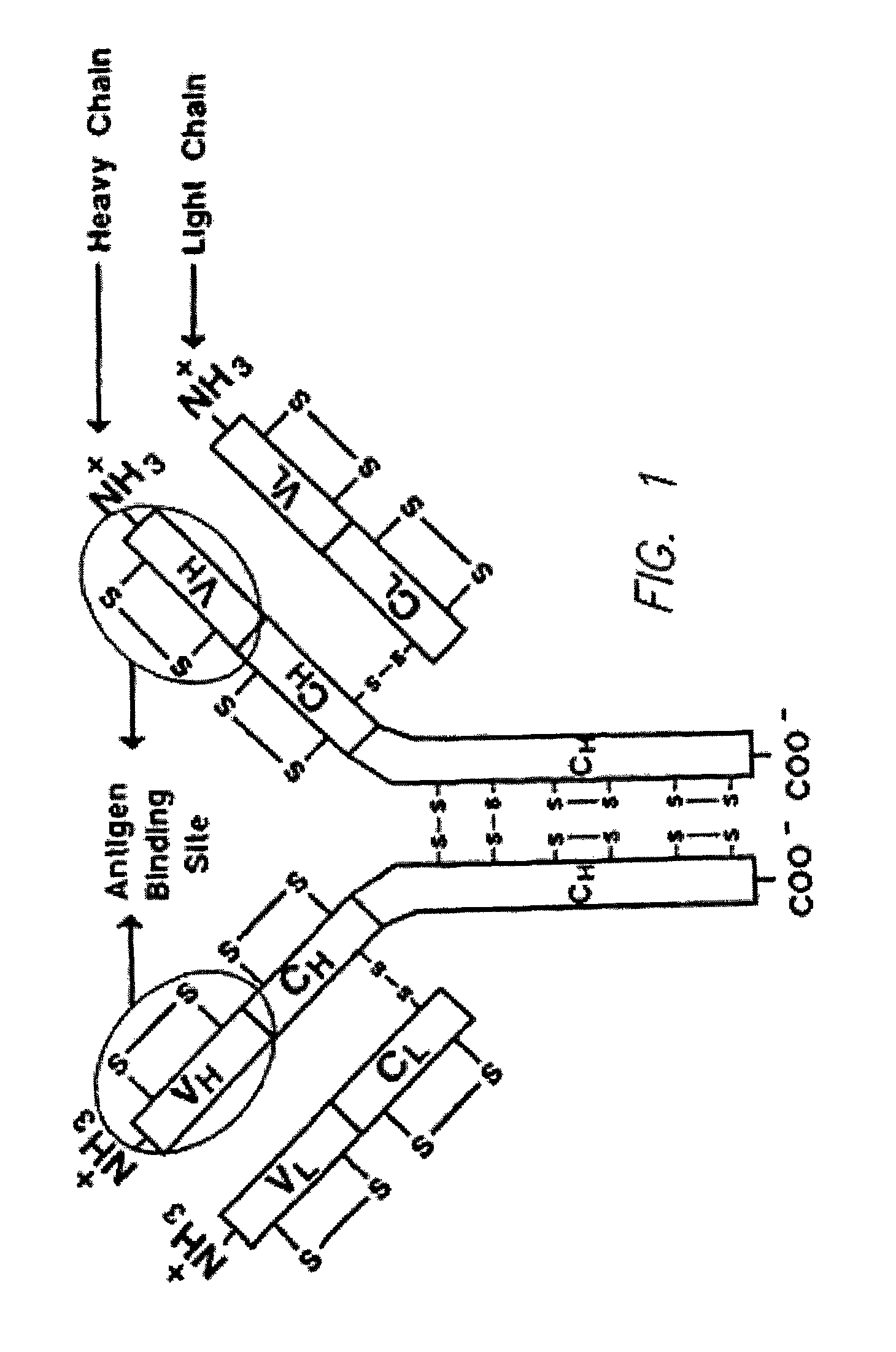Method for tapping the immunological repertoire
a technology of immunological repertoire and method, applied in the field of methods, can solve the problems of low hybridoma culture production capacity, genetic instability, and current methods for generating monoclonal antibodies are not capable of efficiently surveying the entire antibody response induced by a particular immunogen
- Summary
- Abstract
- Description
- Claims
- Application Information
AI Technical Summary
Benefits of technology
Problems solved by technology
Method used
Image
Examples
examples
[0149]The following examples are intended to illustrate, but not limit, the scope of the invention.
[0150]1. Polynucleotide Selection
[0151]The nucleotide sequences encoding the immunoglobulin protein CDR's are highly variable. However, there are several regions of conserved sequences that flank the Vii domains. For instance, contain substantially conserved nucleotide sequences, i.e., sequences that will hybridize to the same primer sequence. Therefore, polynucleotide synthesis (amplification) primers that hybridize to the conserved sequences and incorporate restriction sites into the DNA homolog produced that are suitable for operatively linking the synthesized DNA fragments to a vector were constructed. More specifically, the DNA homologs were inserted into Lambda ZAP II vector (stratagene Cloning System, San Diego, Calif.) at the Xho I and EcoR I sites. For amplification of the VH domains, the 3′ primer (SEQ ID NO:60 in Table 1), was designed to be complementary to the mRNA in the ...
PUM
| Property | Measurement | Unit |
|---|---|---|
| pH | aaaaa | aaaaa |
| pH | aaaaa | aaaaa |
| volume | aaaaa | aaaaa |
Abstract
Description
Claims
Application Information
 Login to View More
Login to View More - R&D
- Intellectual Property
- Life Sciences
- Materials
- Tech Scout
- Unparalleled Data Quality
- Higher Quality Content
- 60% Fewer Hallucinations
Browse by: Latest US Patents, China's latest patents, Technical Efficacy Thesaurus, Application Domain, Technology Topic, Popular Technical Reports.
© 2025 PatSnap. All rights reserved.Legal|Privacy policy|Modern Slavery Act Transparency Statement|Sitemap|About US| Contact US: help@patsnap.com



